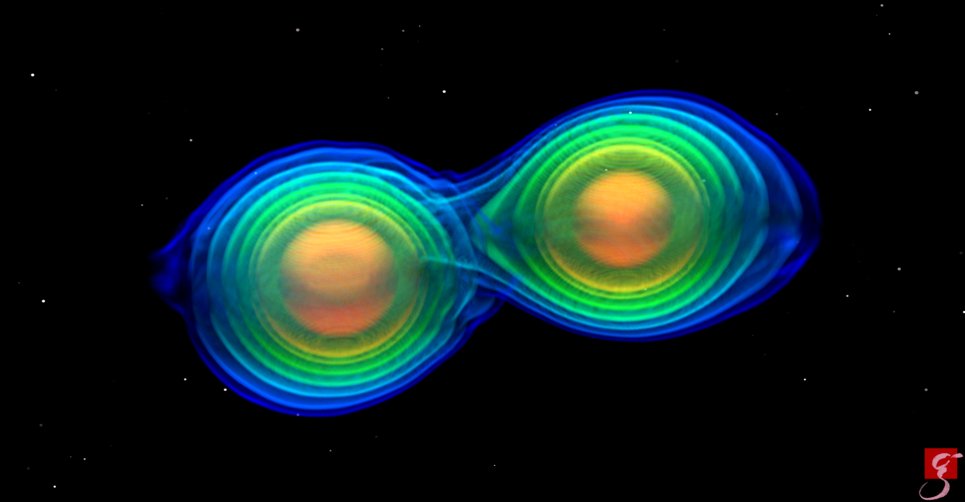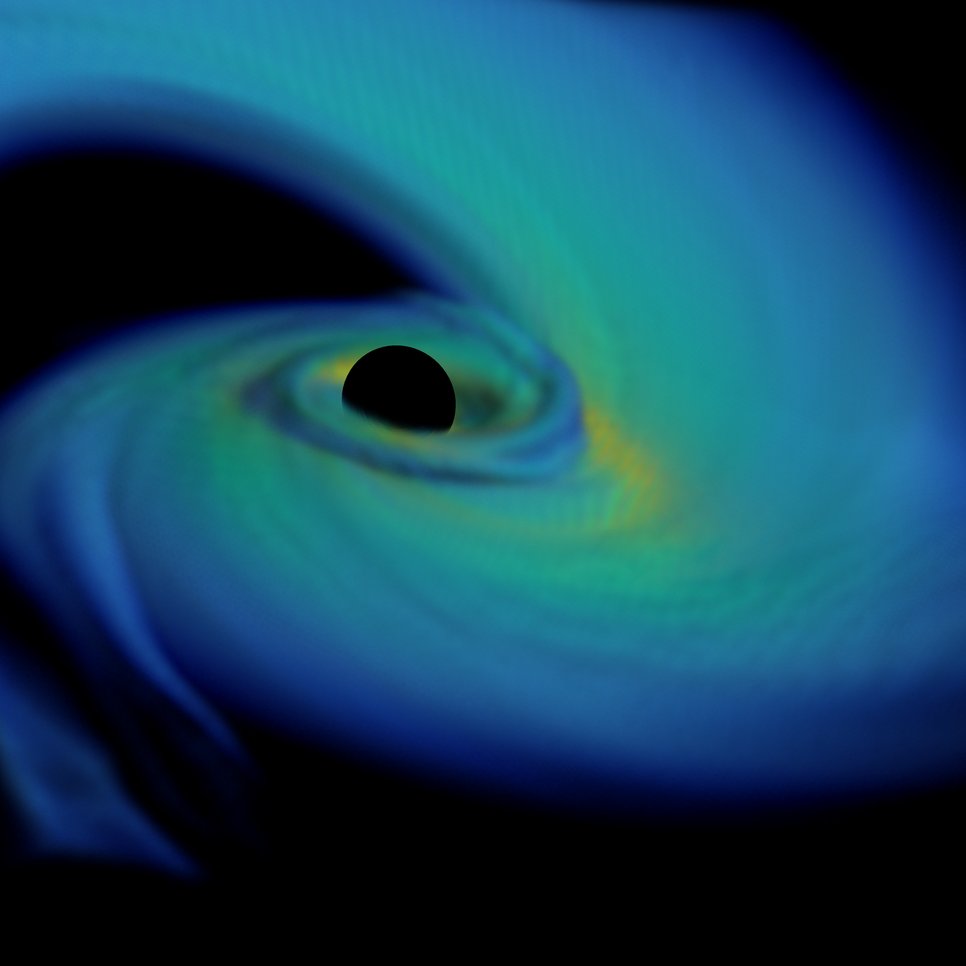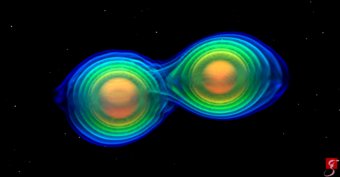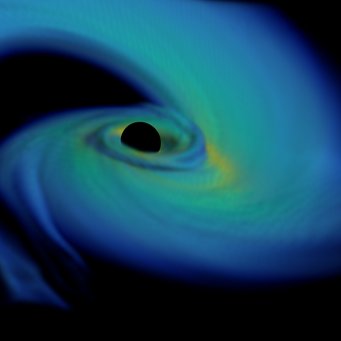LIGO and Virgo detect more neutron star coalescences
The gravitational-wave candidates were likely produced by mergers of a neutron star-black hole binary and a binary neutron star
On April 25, 2019, one of the twin LIGO instruments and the Virgo detector observed a candidate signal which – if confirmed – would be the first binary neutron star merger during the third observation run, which began on April 1. A second candidate signal was seen on April 26, which – if confirmed – could be a never-observed-before collision of a neutron star with a black hole. The latter candidate was observed by both LIGO instruments and the Virgo detector. Dozens of telescopes on the Earth and in space are searching for electromagnetic or astro-particle counterparts. No identification with an electromagnetic transient signal nor a host galaxy has been made to date for either candidate.
“With the larger volumes of the universe probed by the third-observation run, we can now witness more rare and extreme events such as the collision of a neutron star with another collapsed star,” says Alessandra Buonanno, director at the Max Planck Institute for Gravitational Physics in Potsdam. “We expect many more discoveries in the coming months,” adds Karsten Danzmann, director at the Max Planck Institute for Gravitational Physics in Hannover and director of the Institute for Gravitational Physics at Leibniz Universität Hannover. “Theory and experiment are working hand in hand to solve the mysteries of the universe.”
The LIGO and Virgo collaborations have also identified three binary black hole merger candidates in the first month of O3: on April 8, April 12, and April 21.
Gravitational-wave observations of the “S190425z” event

When the gravitational wave arrived on the Earth at 8:18 UTC on April 25, only the LIGO Livingston instrument and the Virgo detector were taking data. LIGO Livingston registered the event (currently denoted “S190425z” by its database identifier), which was too faint for Virgo to detect with high statistical significance.
Because of these reasons, the sky localization of S190425z is less precise than that of GW170817, the first neutron star merger discovered through gravitational waves, which was observed with three instruments, and much closer and therefore louder. Initial LIGO/Virgo observations constrained the sky position of S190425z into two patches together covering a large part (about 25%) of the sky.
Automated analysis of the candidate ranked it to be a neutron star merger with more than 99% probability. Further inspection by LIGO/Virgo researchers improved the sky localization and estimated the signal at a distance of 370 to 640 million light-years to Earth. GW170817 was about 130 million light-years away.
Gravitational-wave observations of the “S190426c” event

A second (statistically less significant) candidate signal was observed by both LIGO detectors and the Virgo instrument at 15:22 UTC on April 26. The event, referred to as “S190426c”, could be the first ever observation of a neutron star colliding with a black hole, or another binary neutron star merger.
LIGO/Virgo analysis places this signal at a relatively remote distance of 900 million to 1.6 billion light-years and provides a sky map for astronomers to search for expected electromagnetic and astro-particle counterparts.
Searching for counterparts
Following both public LIGO/Virgo alerts regarding S190425z and S190426c, respectively, more than 160 follow-up reports from electromagnetic and astro-particle observatories on the ground and in space have been issued. So far, none of them identified a counterpart of the gravitational-wave candidates. Further observations are ongoing.
LIGO and Virgo researchers are closely analyzing gravitational-wave data, to better understand the statistical significance of both events and the astrophysical properties of their respective sources.
LIGO and Virgo
LIGO is funded by NSF and operated by Caltech and MIT, which conceived of LIGO and led the Initial and Advanced LIGO projects. Financial support for the Advanced LIGO project was led by the NSF with Germany (Max Planck Society), the U.K. (Science and Technology Facilities Council) and Australia (Australian Research Council-OzGrav) making significant commitments and contributions to the project. Approximately 1,300 scientists from around the world participate in the effort through the LIGO Scientific Collaboration, which includes the GEO Collaboration. A list of additional partners is available at https://my.ligo.org/census.php.
The Virgo Collaboration is currently composed of approximately 350 scientists, engineers, and technicians from about 70 institutes from Belgium, France, Germany, Hungary, Italy, the Netherlands, Poland, and Spain. The European Gravitational Observatory (EGO) hosts the Virgo detector near Pisa in Italy, and is funded by Centre National de la Recherche Scientifique (CNRS) in France, the Istituto Nazionale di Fisica Nucleare (INFN) in Italy, and Nikhef in the Netherlands. A list of the Virgo Collaboration members can be found at http://public.virgo-gw.eu/the-virgo-collaboration/. More information is available on the Virgo website at http://www.virgo-gw.eu.

